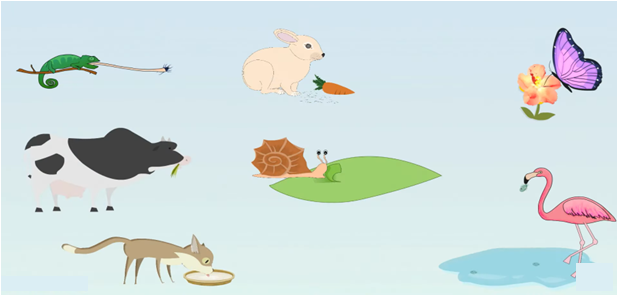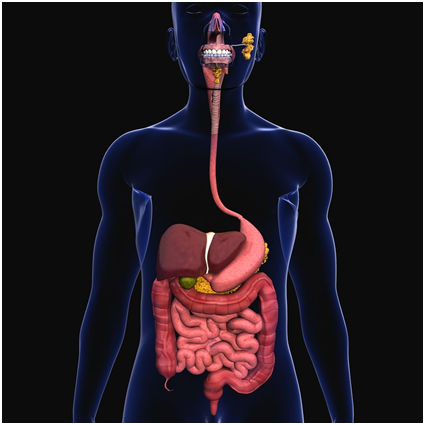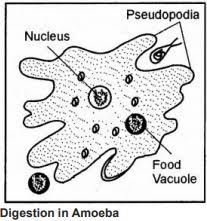Different Ways of Taking Food
Chapter 2: Nutrition in Animals
Different ways of taking food

Food is required by all the organisms. The animal nutrition includes the nutrient requirements, the mode of food intake, and the utilization of food in the body. The intake of food is called ingestion. The ingested food is broken down into simpler substances in the process called digestion. The mode of food intake varies in different organisms. Let us have a look at the different ways of taking food by the organisms.
Digestion in Humans
Digestion in humans

The human digestive system consists of the gastrointestinal tract plus the accessory organs of digestion (the tongue, salivary glands, pancreas, liver, and gallbladder). Digestion involves the breakdown of food into smaller and smaller components, until they can be absorbed and assimilated into the body.
The process of digestion has three stages: the cephalic phase, the gastric phase, and the intestinal phase.The first stage, the cephalic phase of digestion, begins with secretions from gastric glands in response to the sight and smell of food.The second stage of digestion begins in the stomach with the gastric phase.
The third stage begins in the duodenum with the intestinal phase, where partially digested food is mixed with a number of enzymes produced by the pancreas.
Digestion in Grass-Eating Animals
Digestion in grass eating animals
The animals (such as cow) which eat grass have a special stomach to digest the tough cellulose carbohydrate present in grass. The stomach of a cow is large and consists of four compartments (or four chambers).The first compartment of a cow’s stomach is the biggest and it is called rumen.
When cow eats grass as food while grazing, it does net chew it completely (because it has no time for it). The cow swallows the grass quickly with little chewing and stores it in the rumen (which is the first compartment of stomach).
The rumen contains cellulose digesting bacteria. The bacteria present in the rumen of a cow start to digest cellulose carbohydrate present in grass food. Thus, the grass is partially digested in the rumen. The partially digested food (or partially digested grass) in the rumen of a cow is called cud.
Feeding and Digestion In Amoeba.
Feeding and digestive in Amoeba

The process of digestion in amoeba is very simple and short. Amoeba don’t have mouth and digestive system .Then don’t u have a question , How they eat food ,digest food and excrete food .Amoeba eats microscope ,after it has the feeling of near by food.It extend its pseudopodia all over the food and consume it .Then the food enters into the food vacuole which contain some digestive juice .The action done by food vacuole on food convert it into smooth substance .The digested food used to grow , reproduction , etc by amoeba.
Fibre to fabric
Animal skin and leaves were utilised to cover the body of early men. However, as time went by, humans perfected the art of extracting fibres from plants and animals. Subsequently, humans began weaving them into garments. Since the prehistoric era, there has been continuous change, advancements, and modifications in all the basic needs of human beings, including food, shelter, and clothing to make our lives comfortable.Fibres are extremely long, flexible, and thin thread-like structures of a natural or artificial substance. Yarn is made from fibres. Furthermore, these yarns are combined to form different types of fabrics. Fibres are classified into two types based on origin: natural fibres and synthetic fibre.


 Grow Career Publication
Grow Career Publication
 Param Publication
Param Publication
